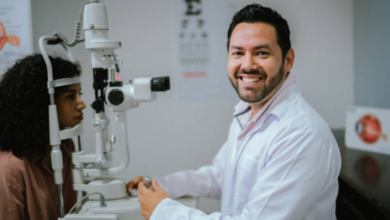Why Ignoring Headaches Can Sometimes Be Dangerous

Everyone gets headaches. Whether it’s the dull pressure that comes after a stressful day, the throbbing ache from dehydration, or the occasional tension headache after too much screen time, most of us shrug them off. A couple of painkillers, a glass of water, and some rest usually do the trick. But sometimes, a headache isn’t just a headache — it’s your body’s way of signalling something far more serious.
Headaches are one of the most common medical complaints worldwide, and while most are harmless, certain types can point to underlying conditions that require urgent medical attention. Knowing when to take them seriously could quite literally save your life.
When a Headache Isn’t “Just a Headache”
Most headaches are classified as primary headaches — meaning they’re not caused by another medical issue. These include tension headaches, migraines, and cluster headaches. They’re unpleasant but generally manageable with lifestyle adjustments, hydration, and medication.
The ones that concern doctors are secondary headaches — those that result from another underlying problem. These can stem from issues like high blood pressure, infection, trauma, or even abnormalities in the brain’s blood vessels. In rare cases, a sudden or severe headache could signal something critical such as a brain bleed, aneurysm, or tumour. In those situations, consulting a specialist such as a sydney neurosurgeon might be essential for proper diagnosis and treatment.
The key is to recognise when a headache’s pattern, intensity, or accompanying symptoms differ from your usual experience.
Red Flags You Should Never Ignore
So, how do you tell the difference between a harmless headache and one that could be serious? Here are some warning signs that mean it’s time to stop guessing and get checked out.
1. “The Worst Headache of Your Life”
If your headache comes on suddenly and feels unlike anything you’ve ever experienced — intense, sharp, and peaking within seconds or minutes — it could be a sign of a subarachnoid haemorrhage (bleeding in the space around the brain). This is a medical emergency. Immediate hospital care is crucial.
2. Headache After Head Injury
A headache following even a minor knock to the head can sometimes indicate a concussion or internal bleeding. Symptoms like confusion, vomiting, drowsiness, or changes in vision are red flags that should never be ignored.
3. Changes in Vision or Speech
Headaches accompanied by blurred vision, double vision, difficulty speaking, or weakness on one side of the body could suggest a neurological event, such as a stroke or brain aneurysm.
4. Headaches That Wake You Up at Night
If a headache repeatedly wakes you up from sleep or is worst in the morning, it may be linked to increased pressure in the brain. These types of headaches can sometimes point to tumours or other intracranial issues.
5. Headaches with Fever or Neck Stiffness
Severe headache with fever, neck stiffness, or sensitivity to light could indicate meningitis, a potentially life-threatening infection of the membranes surrounding the brain and spinal cord.
6. A Gradual Increase in Frequency or Intensity
If your headaches are becoming more frequent or severe over time, it could be a sign of a chronic underlying issue. Persistent headaches that don’t respond to medication should always be evaluated by a doctor.
See also: Health Insurance Challenges for Non-US Citizens (And How to Solve Them)
The Hidden Causes Behind Persistent Headaches
Not every serious headache points to a neurological emergency — but chronic or recurrent headaches often have underlying triggers that need addressing.
1. High Blood Pressure (Hypertension)
Consistently high blood pressure can cause dull, throbbing headaches, especially at the back of the head. It’s sometimes called the “silent killer” because you may not feel unwell until complications arise. Regular monitoring is essential, particularly if you’re over 40 or have a family history of cardiovascular issues.
2. Hormonal Changes
Fluctuations in hormones — such as during menstruation, pregnancy, or menopause — can trigger headaches or migraines. These are often cyclical but can worsen with stress, dehydration, or lack of sleep.
3. Eye Strain and Poor Posture
Spending hours staring at screens or working in poor lighting puts strain on the eyes and neck muscles, leading to tension headaches. Simple fixes like adjusting monitor height, taking breaks, and checking your glasses prescription can make a big difference.
4. Dehydration and Diet
Even mild dehydration can trigger headaches. Certain foods — such as processed meats, caffeine, or alcohol — can also act as triggers. Keeping hydrated and maintaining a balanced diet helps prevent avoidable headaches.
5. Stress and Mental Fatigue
Emotional tension is one of the most common triggers for headaches. Stress tightens the muscles around the scalp and neck, leading to pressure-like pain. Learning stress management techniques — from mindfulness and breathing exercises to regular exercise — can help reduce their frequency.
The Role of Diagnosis
The challenge with headaches is that they can be caused by anything from dehydration to serious neurological conditions. That’s why proper diagnosis is crucial.
Doctors often start by taking a detailed history — when your headaches occur, how long they last, and what they feel like. They’ll ask about lifestyle factors, medications, and family history. In some cases, further tests like MRI or CT scans are used to rule out structural causes such as tumours, bleeding, or inflammation.
Blood tests might check for infection, anaemia, or thyroid issues. Eye exams can detect vision-related triggers or signs of increased pressure inside the skull.
A correct diagnosis doesn’t just provide peace of mind — it ensures you get the right treatment before complications develop.
Treating the Underlying Cause
Once the cause of your headache is identified, treatment can be tailored to address it directly.
- For tension headaches, lifestyle adjustments such as improved posture, stress reduction, and over-the-counter medication are often effective.
- For migraines, avoiding known triggers and using prescribed medications (like triptans) can make a huge difference.
- For sinus headaches, decongestants or treating the infection can bring relief.
- For secondary headaches, such as those caused by high blood pressure or infection, addressing the root cause is the only lasting solution.
It’s also worth noting that overusing painkillers can actually cause more headaches — a phenomenon known as “rebound headaches.” If you’re taking medication frequently and still experiencing pain, it’s time to reassess with your doctor.
When to Seek Immediate Help
While most headaches can be managed at home, certain situations require urgent medical attention. Call emergency services or go to a hospital if you experience:
- A sudden, severe headache that comes on in seconds
- A headache following a head injury
- Headache with confusion, weakness, or difficulty speaking
- Headache with fever, rash, or neck stiffness
- Persistent vomiting or vision changes
- Headache that worsens despite rest and medication
It’s always better to err on the side of caution. A doctor can quickly determine whether your symptoms are minor or serious.
Taking Headaches Seriously
It’s easy to dismiss headaches as part of modern life — the result of stress, screens, or a busy schedule. And often, that’s all they are. But when headaches change in pattern, come with other symptoms, or simply don’t feel “normal,” they’re worth paying attention to.
Ignoring the warning signs can delay diagnosis of serious conditions, some of which can progress rapidly if left untreated. Paying attention to your body, keeping track of symptoms, and seeking professional advice when needed are small steps that can make a huge difference.
Headaches may be common, but that doesn’t mean they should be ignored. Listening to what your body is trying to tell you could be one of the smartest health decisions you ever make. Sometimes, that dull ache isn’t just asking for rest — it’s asking for attention.





